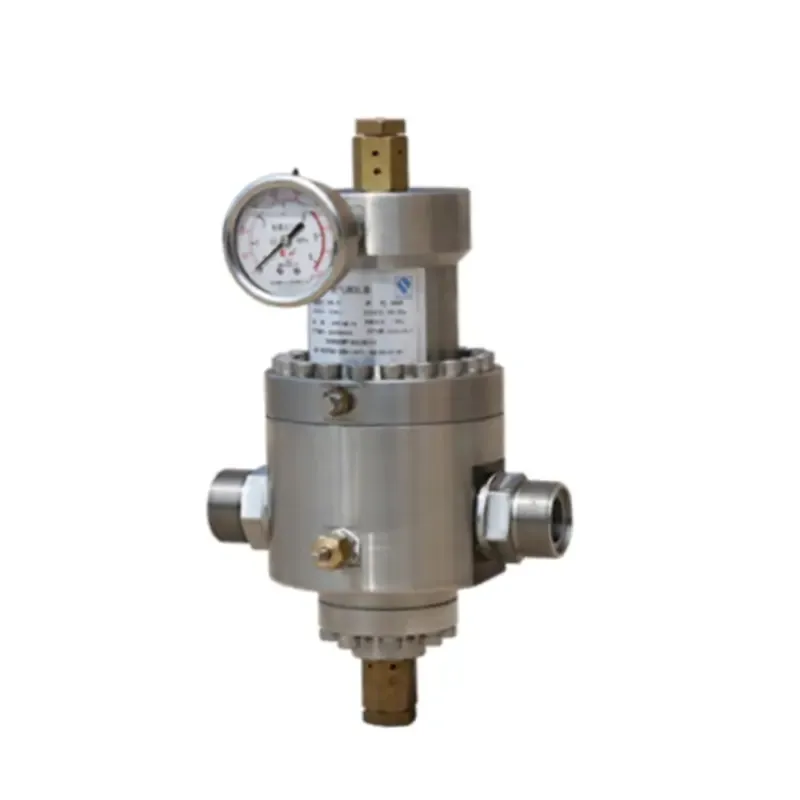
Nov . 10, 2024 15:00
Back to list
Understanding the Function and Importance of Pressure Relief Valves in Safety Systems
Understanding Relief Valves Vital Components in Pressure Regulation
In various industrial applications, maintaining the correct pressure is crucial for both efficiency and safety. One of the key components that help achieve this is the relief valve. Understanding the functioning, types, and applications of relief valves is essential for engineers, technicians, and safety professionals in many industries.
What is a Relief Valve?
A relief valve is a safety device designed to automatically release pressure from a system when it exceeds a predetermined threshold. This is crucial in preventing equipment failure, explosions, or hazardous leaks that can result from overpressure conditions. Typically used in piping systems, pressure vessels, and refrigeration units, relief valves serve both safety and operational purposes.
How Do Relief Valves Work?
Relief valves operate on the principle of a spring-loaded mechanism. When the pressure in a system rises above a specified level, the force exerted by the fluid on the valve seat will overcome the spring force keeping the valve closed. This action causes the valve to open, allowing fluid to escape until the pressure within the system falls back to a safe level. Once the pressure decreases, the valve closes, preventing any further fluid loss. This automatic operation is crucial for maintaining system integrity and safety.
Types of Relief Valves
Relief valves come in various designs, each suited for specific applications
. The most common types include1. Spring-Loaded Relief Valves The most widely used type, these valves rely on a spring mechanism to control the opening and closing. They are often used in water, gas, and oil systems.
2. Pilot-Operated Relief Valves These valves utilize a small pilot valve that controls the main valve. They are ideal for high-pressure applications since they can handle larger flows with lower spring requirements.
3. Ball or Pop-Off Valves These are typically found in smaller applications, like gas appliances or pressure cookers, where a simple and effective solution is required.
relief valve

4. Rupture Disks Although technically not a valve, rupture disks serve a similar safety function by providing a backup means to relieve pressure in case of valve malfunction.
Applications of Relief Valves
Relief valves are integral in numerous industries, including
- Chemical Processing These valves help prevent pressure build-up in reactors and inhibit the formation of hazardous conditions.
- Oil and Gas Used in pipelines, oil refineries, and storage tanks, relief valves prevent catastrophic failures and explosions.
- Steam Systems In steam boilers, relief valves prevent overpressure scenarios that could result in boiler explosions, safeguarding worker safety and equipment.
- Refrigeration Systems In chillers and refrigerants, relief valves ensure pressure levels remain within operational thresholds to avoid compressor damage.
Maintenance and Testing
Regular maintenance and testing are essential to ensure that relief valves function correctly. This includes checking for leaks, ensuring the seat is clean, and verifying that the spring is intact. Many industries require periodic testing to meet safety regulations and standards. Knowing when and how to test relief valves is crucial to any maintenance program and can prevent failures during critical operations.
Conclusion
Relief valves are indispensable components in many hydraulic and pneumatic systems, playing a critical role in pressure regulation and safety. Understanding their function, types, and applications enhances the ability of professionals to design safe and efficient systems. Regular maintenance is key to ensuring their effectiveness and compliance with safety standards. For anyone working in industries where pressure systems are prevalent, having a firm grasp on relief valves is essential for fostering a safe working environment.
Latest news
-
Safety Valve Spring-Loaded Design Overpressure ProtectionNewsJul.25,2025
-
Precision Voltage Regulator AC5 Accuracy Grade PerformanceNewsJul.25,2025
-
Natural Gas Pressure Regulating Skid Industrial Pipeline ApplicationsNewsJul.25,2025
-
Natural Gas Filter Stainless Steel Mesh Element DesignNewsJul.25,2025
-
Gas Pressure Regulator Valve Direct-Acting Spring-Loaded DesignNewsJul.25,2025
-
Decompression Equipment Multi-Stage Heat Exchange System DesignNewsJul.25,2025

